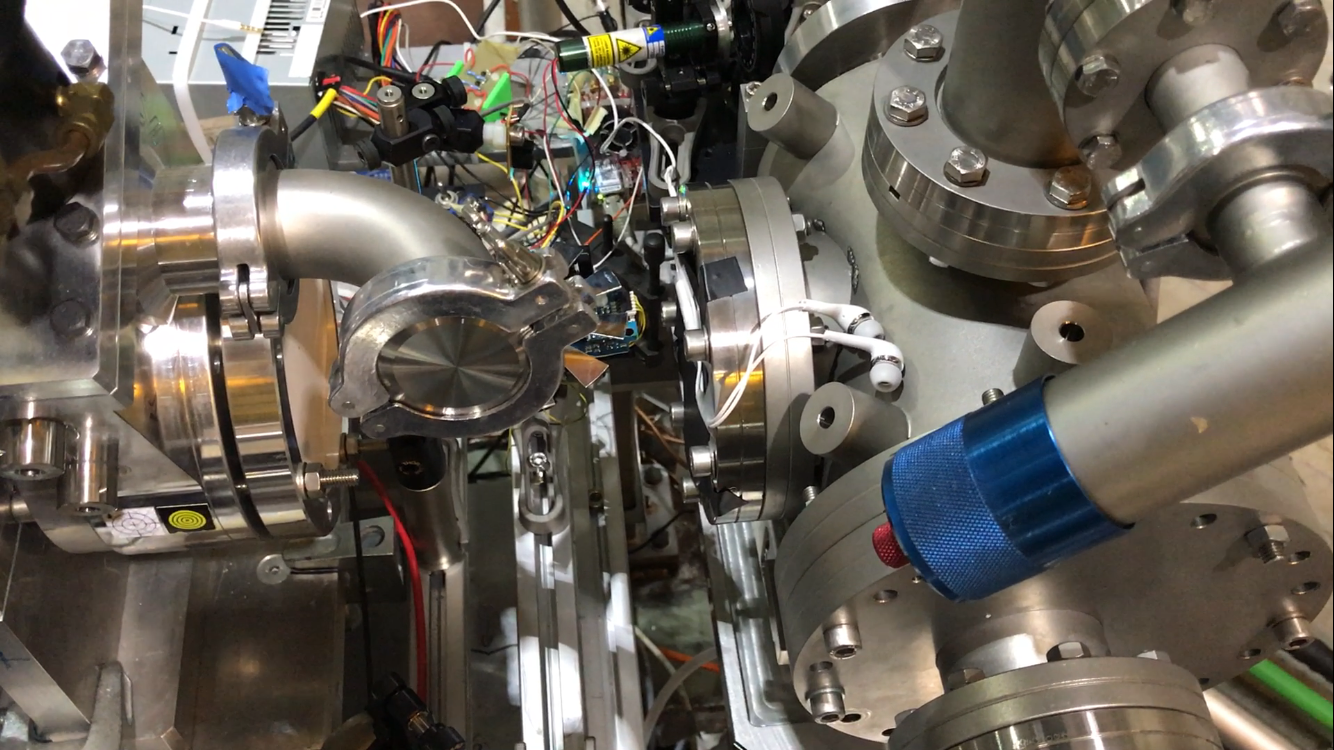FERNEY-VOLTAIRE, FRANCE — Some particle physics experiments are easier to ride than others. The giant detectors that take pictures of particle collisions on kilometres-round rings don’t really have anywhere to sit, and the intense bureaucracy would probably demand an unwieldy amount of paperwork for would-be riders. The thing that stopped me from riding the whale-sized CAST experiment, however, wasn’t fear of disrupting its search for dark matter particles. It was that deputy spokesperson Giovanni Cantatore misplaced the harness.
CAST with a box of Axion detergent (Image: CERN)
The CERN Axion Solar Telescope certainly lacks the stuffy vibe stereotypical of other particle physics experiments — but that makes sense. It’s looking for axions, hypothetical dark matter particles that are literally named after a laundry detergent. The experiment’s 70 or so industrious researchers have seemingly slapped together a dark matter detector using a recycled magnet, and they test their sun-watching tube using a pair of iPhone headphones. But it’s serious business, and scientists have just published a set of serious results that will give some important direction into the hunt for those elusive axions.
“This is probably the most important result from the experiment so far,” University of Zaragoza researcher Igor Garcia Irastorza told Gizmodo, speaking on behalf of the experiment’s results reported in the journal Nature Physics today.

Image: Ryan F. Mandelbaum
Axions are theorised low-mass particles, and dark matter candidates. Scientists’ observations of the universe show that the matter we measure conventionally only seems to account for a sixth or so of the gravity present — dark matter could account for the rest. That’s why they’re hunting for a particle that might be the source of all that gravity.
Theory says that if axions interact with light particles called photons, then the Sun should produce some of them. And so, to hunt for axions, scientists point CAST at the Sun for three hours a day, hoping that some of those dark matter particles might turn into detectable X-rays inside its recycled magnet. If X-rays corresponding to a certain energy level were observed at a higher rate than expected, it would signal to researchers that axions were the source.
The researchers haven’t found axions in their latest paper, but in particle physics, not finding stuff can sometimes be equally exciting. CAST has been looking for axion particles since 2003. Even before that, physicists were hunting for axions with this experiment originally called SATAN, or the Solar Axion Telescopic Antennae, “but when the field got serious some people said if you want to get funding fro this experiment you might want to change the name,” said Irastorza.

The original CAST logo, back when it was called SATAN (Image Ryan F. Mandelbaum)
Until now, CAST hadn’t been hunting for axions at masses and X-ray production levels predicted by astrophysics. But an upgrade to the experiment’s X-ray telescope and detectors is finally enabling it to hunt for axions in more physically-realistic ranges. Previous axion-hunting attempts were a bit like when you lose something and then go looking for it, retracing all of your steps leading up to the last place you know you had it — just in case. CAST’s researchers have essentially just entered the bar where they think they left their wallet after searching the entire walk over, and this paper is like looking under the first barstool.
“The people who have written this paper aren’t feeling destitute about not finding axions,” Dr Chanda Prescod-Weinstein, the University of Washington axion wrangler, told Gizmodo. “While null results aren’t the most fun we ever have, they’re an important part of real every day science. Ruling out certain parts of parameter space helps us to refine our theories as well as future experiments.”
Prescod-Weinstein did point out that CAST’s latest search isn’t focused on axions permeating through space — it’s mainly sensitive to those coming off the Sun. There could be other ways that axions are produced that CAST can’t see, and there other experiments are looking for them too, writes Barry University assistant professor of physics Maurizio Giannotti in a commentary published today in Nature. Those other experiments include the University of Washington’s ADMX, and ALPS in Germany.
Nor will the search for solar axions specifically stop at CAST — the experiment’s successor, the proposed International Axion Observatory or IAXO, would be orders of magnitude sensitive, said Irastorza.

Notice the earbuds taped to the experiment (Image: Ryan F. Mandelbaum)
CAST’s researchers have expanded their detectors’ search to more than just solar axions, too, even hunting for the hypothesised dark energy “chameleon” particle that could be causing our universe’s expansion to accelerate. For now, the physicists will continue to do science in what might be the most DIY-way possible for a physics experiment.
“We listen passively for noises with this microphone. This is our acoustic detector,” said Cantatore, pointing to the microphone on a pair of earbuds taped over the portion of the detector meant to find the chameleons. “The other thing we do is use a tone generator, also known as an iPhone, to generate notes to see how the device reacts, just to monitor noise and background.” He sang a deep vibrato tone into the back of the experiment and watched its waveform show up on an oscilloscope beside CAST.
“We have a lot of fun with this.”
